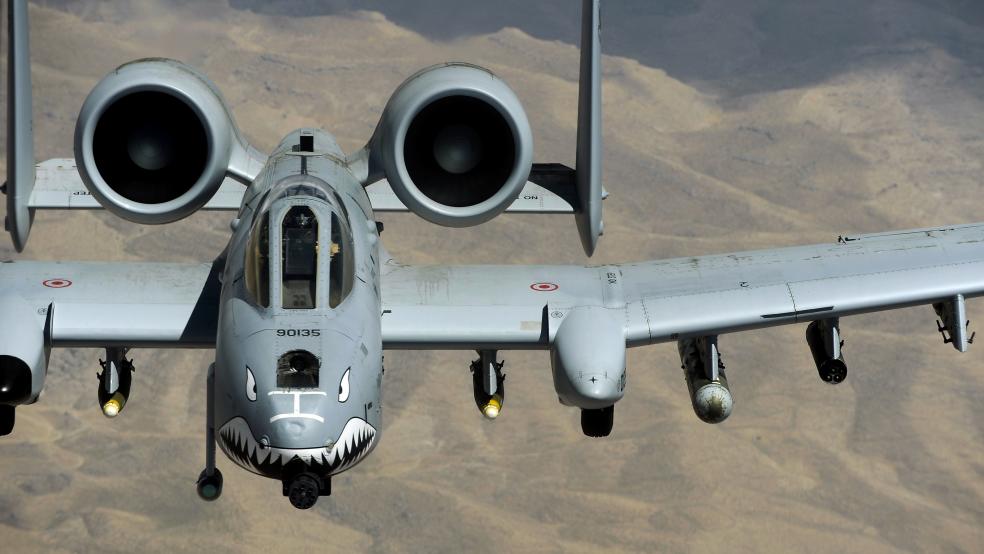The Air Force didn’t help its long-standing argument that the A-10 Thunderbolt II attack jet should be retired when the service announced this week it would deploy more of the aircraft to Europe this fall.
The 23rd Wing at Moody Air Force Base in Georgia announced it will send 12 attack planes and crews to Central and Eastern European to bolster NATO’s “Operation Atlantic Resolve,” an ongoing show of military might meant to deter Russian aggression in the region.
Related: The $1 Trillion Question for the F-35: Is the U.S. Buying an Inferior Plane?
In March, the Air Force deployed a dozen A-10s from Davis-Monthan Air Force Base in Arizona to Romania and the Czech Republic.
Together, the deployments are sure to fuel lawmaker arguments that the A-10, known among troops as the “Warthog,” shouldn’t be mothballed.
The Air Force has waged a years-long campaign to scrap its A-10 fleet in a bid to save roughly $4 billion. Service leaders argue the plane’s close air support mission can be performed by other platforms, such as the B-1 bomber and the highly-anticipated F-35 Joint Strike Fighter.
Those pleas fallen on deaf ears across Capitol Hill. Lawmakers contend there is no viable substitute out there today for the jet that has recently flown missions in Iraq and Afghanistan.
Related: Marine Corps Declares Its Problem-Plagued F-35 Ready for Combat
In May, the House approved a version of the fiscal 2016 defense policy bill that included $683 million to keep the A-10 airborne another year.
Not long after, the Senate cleared its draft of the policy roadmap that included slightly less funding for the aircraft, $355 million, because it didn’t call for $240 million to replace wings on the venerable fleet. But it did direct the Air Force to keep 171 jets ready for combat, an acknowledgement of the fiscal 2015 joint defense policy legislation that allowed the service to shift up to 36 Warthogs into back-up status and shuffle crews from the A-10 to the F-35 program.
The House and Senate Appropriations panels followed suit, setting aside millions in their respective spending bills to keep the A-10 flying next fiscal year.
House and Senate lawmakers have hit some roadblocks in trying to conference together their defense policy roadmaps, but the language protecting the A-10 from retirement is expected to survive.
And while the defense spending bills are stuck in limbo, many in Washington predict the Air Force will once again try to scrap the A-10 when the Pentagon rolls out its fiscal year 2017 spending request early next year.





